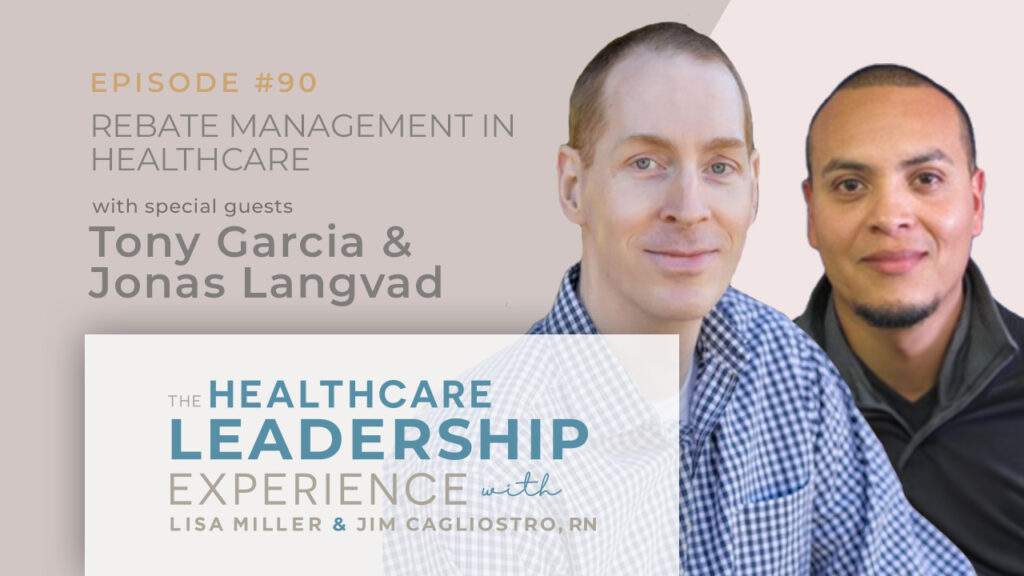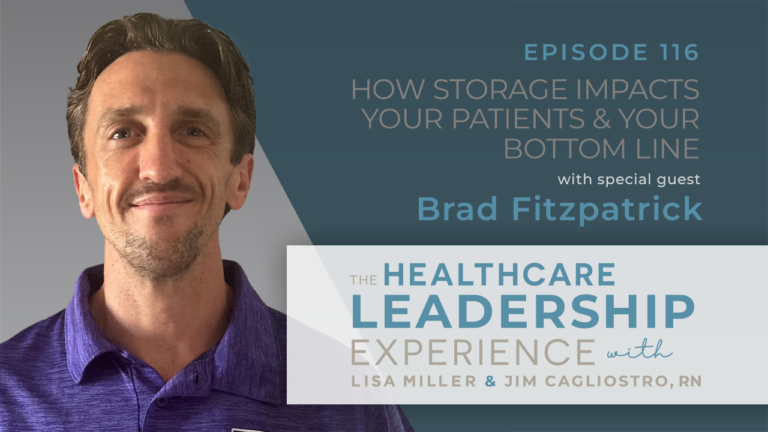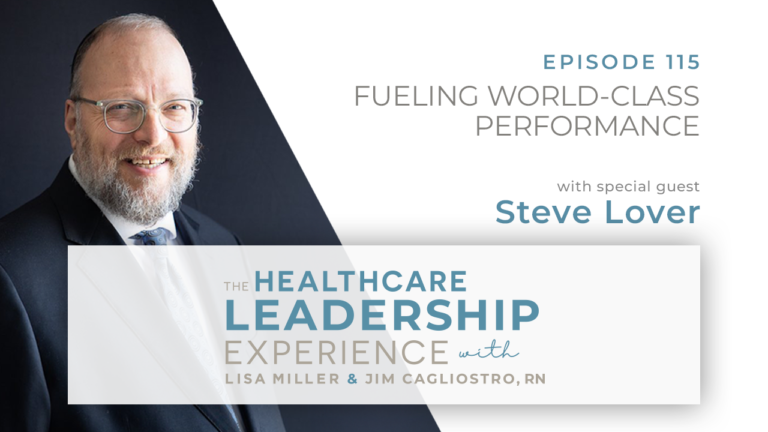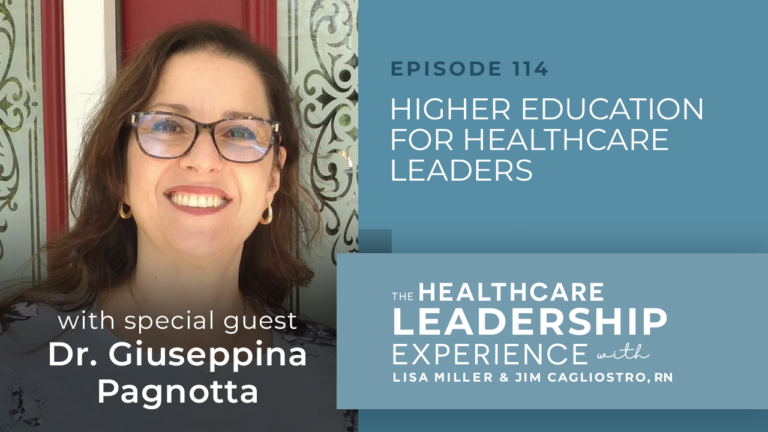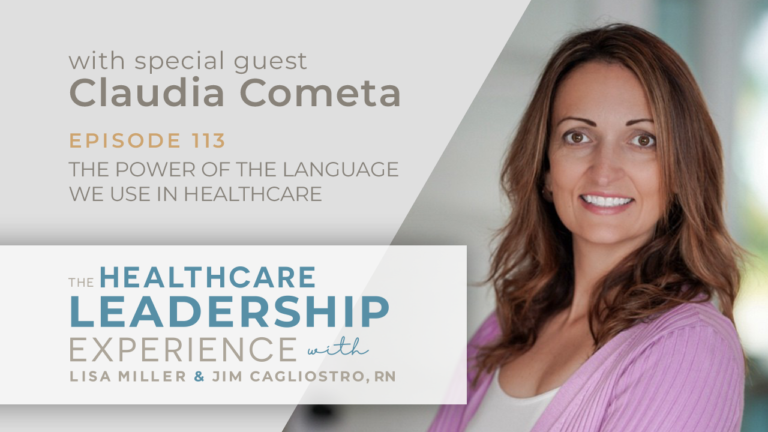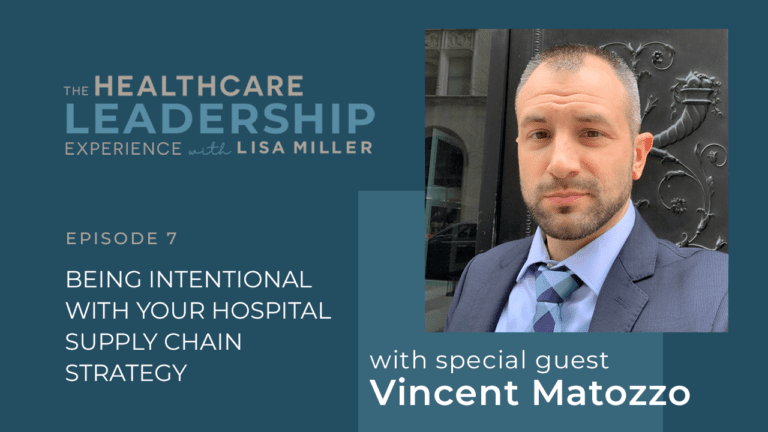Episode Introduction
Tony & Jonas explain why 100% of rebates go straight to the bottom line, share the 3 Ms of rebate management, and highlight how Rebate Insight’s SaaS solution is increasing hospital rebates by 26% or more. They also explain how ‘’dark data’’ blurs visibility into rebate management and celebrate being part of SpendMend.
Show Topics
- Rebate management should be a priority in healthcare
- Manual processes make it difficult to track rebates
- The 3 M’s of rebate management
- Dark data and the pain points of rebate management
- Benefits of Software-as-a-Service (SAAS)
- The value of SpendMend
02:29 Rebate management should be a priority in healthcare
Tony said in times of financial pressure, rebates go straight to the bottom line to boost margins.
‘’I think I’ll start a little bit at the high level, to get to the 10,000-foot level for hospitals. The financial performance of a hospital is always important, and I think we’ve had a few interesting years in the past here, coming out of, first of all, covid introduced a lot of additional costs for hospitals, labor shortages, and product shortages for sure that spiked prices. Then after that, we’ve seen a great deal of inflation and products increasing dramatically in price, so that’s really impacted hospitals in a big way. I think right now, just the financial situation, everyone’s looking to see what can be done to reduce cost, stay competitive. When it comes to rebates, rebate management, it’s historically been one of those areas that maybe hasn’t been looked at that closely because it is a little bit of a complex area to manage. I think what ends up happening is when you think about, if hospitals are looking for areas to save money in, to reduce costs, they can have different initiatives. On the revenue side, if you end up increasing revenue by let’s say a few million, only about 2% to 4% of that ends up going to the bottom line, because that’s usually the margin of a hospital. It’s very low-margin on the revenue side. However, if you’re able to increase rebates on the cost side, 100% of that is going to go to the bottom line. You have a huge upside potential if you’re able to manage rebates well and increase those rebates.’’
05:53 Manual processes make it difficult to track rebates
Jonas explained the benefits of automation in rebate management.
‘’I come with 25 years of healthcare experience. I’ve been a director at a health system in Southern California, and this is how this was all created. It was so difficult to track rebates, and the benefit of tracking them and knowing what is owed and what the vendor should be paying you and if you’re going to meet your market share was so important and critical, but it was just too hard because the process has always been manual. Historically to this day, we’ve had many discussions with very large IDNs, some of the largest IDNs in the nation, and also on the lower end with smaller hospitals, and they all have the same issue. They’re all using a manual process. They all have teams of staff that do different things, so it’s always been difficult to track rebates. I think now, historically, we created this software that automates that process, where you’re not having to go to a spreadsheet every other day, where it’s giving you notifications in real time. You’re always aware of what’s going on in your contracts, where your market share, where your spend is, and just giving you a lot of insight into rebates and making sure that the vendors are paying you out, paying you on time, and also that you’re meeting their commitment through the agreement as well. It really helps the materials team handle all that.’’
08:02 The 3 M’s of rebate management
Tony explained the importance of monitoring, managing, and maximizing and how Rebate Insight helps hospitals to achieve all three.
‘’Looking at this product and taking all the different information that you receive, we found that by monitoring, managing, and maximizing … those are our three M’s. Those really, if you were to see the demo or if you were to see the dashboard, it really kicks in, and you’re able to … under the whole monitoring is monitoring what your health system’s doing. How are you handling every contract that goes into Rebate Insight, giving you at a high level all the information you need, and then going into the managing piece where it’s more detailed specific to each agreement. Then going into the maximizing, where you’re able to go in and if it is fifteen days, five days before your quarter ends or your annual commitment ends and you have to make a decision, you’re able to do this all through the software, in real time, in a point-click SaaS product. You’re able to effectively go into this product and make decisions or see where you currently stand, all in real time.’’
11:11 Dark data and the pain points of rebate management
Tony said hospitals share many common pain points.
‘’Some of the common pain points are we don’t know what is owed to us. We don’t have any expertise and rebate insight. We work kind of siloed. We don’t know what AP is receiving. Checks are going everywhere. We’re receiving credit memos that people are not aware of. There’s just a lot of that what I say is like dark data out there, and no visibility for the health system as a whole. One thing we found while we were creating this is how many people are involved and how many people should be in the process of rebate tracking that are not, just because you have someone like the director negotiating agreements, putting rebates in place, but you have, on the other side, AP that is receiving the checks, or maybe the vendors are bringing the checks to the director. Just a lot of mismanagement of also where checks are. A lot of times checks are lost, so there’s nothing really that connects everybody. That’s what’s so great about Rebate Insight. It’s all built in that platform where AP has a module, where directors can have access to that dashboard, and then the materials team has access as well.’’
13:56 4 Benefits of Software-as-a-Service (SAAS)
Jonas said Rebate Insight can help to support renegotiating contract terms with suppliers.
‘’Really, I think when we think about value is we think about it almost in different buckets, right? We think about I should say it goes under financial leakage, is you make sure you receive what you’re owed. That’s a big piece. Second is if you can speed up the actual payment, receive it earlier, then you can gain some value from having that cash on hand. Then third, what we think about is if you can maximize your existing agreements, you have opportunities at a given time throughout the year where you might be able to go to a higher tier because you’re so close. You spend a little bit more money to get a bigger benefit. Then finally, when you have a tool like this … and I think Tony can speak to this as well … is you get that visibility into all your agreements. That enables you to just have discussion with suppliers and vendors and say, “Why don’t we renegotiate our terms? Give me a little bit higher rebate,” which when you can track it, that’s a huge benefit for the health system and you’re going to see that financial return.’’
19:22 The value of SpendMend
Tony and Jonas agreed that being with SpendMend feels more like a partnership.
‘’At first, there’s always a little hesitation of selling your creation, right, but the value that SpendMend brings to the table with their 30 years experience in the health system, it has just been so great for at least speaking for myself, and I know Jonas will talk a little bit of this as well. I mean, when you really partner with … and that’s what it really feels like. It doesn’t feel like, “Hey, you got bought out and that’s it.” No, it really feels like we partnered with SpendMend, and it just really opens up a lot of doors for us. Again, with that experience, being able to go to certain leaders in the organization and able to have a sales team, a marketing team, is huge. Those all have been great benefits, and super excited and really almost privileged to have that opportunity.’’
Show Links
Connect with Lisa Miller on LinkedIn
Connect with Jim Cagliostro on LinkedIn
Connect with Tony Garcia on LinkedIn
Connect with Jonas Langvad on LinkedIn
Check out VIE Healthcare and SpendMend
You’ll also hear:
Understanding rebates: ‘’For those not familiar with rebates, right, it’s basically a supplier that offers you an incentive on a contract. If you buy X number of products, they’ll give you let’s say 5% back on a rebate. Usually there’s some criteria tied to it, but that’s sort of the starting point there.’’
The benefits of Rebate Insight’s SaaS tool: ‘’… we’re seeing how systems that are using Rebate Insight increase their rebates by 26% or more by using the tool.’’
How Rebate Insight transforms rebate management: ‘’It’s subscription-based, cloud-based, which makes it very easy to sign up for, implement. There are no expensive servers …it pulls together all the data from different sources… It really gives you that real-time view of this is where you stand today. You can monitor all your rebates, all your contracts this way, all your compliance.‘’
Rebate Insight tracks trends and tiers for hospitals: ‘’Rebate Insight tracks your trends. You could go back and look at the quarter and say, “Wow, my trend for last quarter was tier two, but we’re still signed on tier one. Oh, this quarter is tier two as well. The vendors don’t tell you that. The vendors rarely come back and say, “Hey, you’ve been achieving tier two, go ahead and click on it because now your price is dropping 20%.”
What To Do Next:
- Subscribe to The Economics of Healthcare and receive a special report on 15 Effective Cost Savings Strategies.
- There are three ways to work with VIE Healthcare:
- Benchmark a vendor contract – either an existing contract or a new agreement.
- We can support your team with their cost savings initiatives to add resources and expertise. We set a bold cost savings goal and work together to achieve it.
- VIE can perform a cost savings opportunity assessment. We dig deep into all of your spend and uncover unique areas of cost savings.
- If you are interested in learning more, the quickest way to get your questions answered is to speak with Lisa Miller at lmiller@spendmend.com or directly at 732-319-5700
Episode Transcript
DOWNLOAD THE FULL PDF TRANSCRIPT HERE
CLICK HERE TO OPEN THE FULL TRANSCRIPT
Jonas (00:00):
Some of the common pain points are we don’t know what is owed to us. We don’t have any expertise and rebate insight. We work kind of siloed. We don’t know what AP is receiving. Checks are going everywhere. We’re receiving credit memos that people are not aware of. There’s just a lot of that what I say is like dark data out there, and no visibility for the health system as a whole.
One thing we found while we were creating this is how many people are involved and how many people that should be in the process of rebate tracking that are not, just because you have someone like the director negotiating agreements, putting rebates in place, but you have, on the other side, AP that is receiving the checks, or maybe the vendors are bringing the checks to the director. Just a lot of mismanagement of also where checks are. A lot of times checks are lost, so there’s nothing really that connects everybody. That’s what’s so great about Rebate Insight.
Introduction (00:59):
Welcome to the Healthcare Leadership Experience Podcast, hosted by Lisa Miller and Jim Cagliostro.
Lisa is the founder of VIE Healthcare Consulting and now Managing Director at SpendMend. Lisa and her team has generated over $1 billion in financial improvements for VIE’s clients since 1999.
Since 2007, Jim has been a registered nurse working in critical care, perioperative services and outpatient settings at nationally recognized medical facilities across three states.
You’ll hear conversations on relevant and trending topics in healthcare and much more. Now, here’s your hosts, Lisa and Jim.
Jim (01:39):
Hi, this is Jim Cagliostro, and you’re listening to the Healthcare Leadership Experience. It’s my pleasure today to have the founders of Rebate Insight as our guests today.
Jonas Langvad is the Vice President of Product at Rebate Insight, and Tony Garcia is the Vice President of Business Development.
Especially today, at least the day of this recording, it’s the National Healthcare Supply Chain Week, so it is a very appropriate conversation to have with them. We’re going to learn more about Rebate Insight and what this platform does, and how their team uses it to help hospitals across the country. Jonas and Tony, thank you for joining us today.
Jonas (02:17):
Hey, thanks, Jim, for having us on.
Jim (02:19):
To start, I think we need to just start with the basics and ask you to describe rebate management, what it is and why it should be a priority for every healthcare organization.
Tony (02:29):
Yeah, Jim, I’ll jump in there. I think I’ll start a little bit at the high level, to get to the 10,000-foot level for hospitals. The financial performance of a hospital is always important, and I think we’ve had a few interesting years in the past here, coming out of, first of all, Covid introduced a lot of additional costs for hospitals, labor shortages, and product shortages for sure that spiked prices. Then after that, we’ve seen a great deal of inflation and products increasing dramatically in price, so that’s really impacted hospitals in a big way.
Tony (03:13):
I think right now, just the financial situation, everyone’s looking to see what can be done to reduce cost, stay competitive. When it comes to rebates, rebate management, it’s historically been one of those areas that maybe hasn’t been looked at that closely because it is a little bit of a complex area to manage.
Tony (03:37):
I think what ends up happening is when you think about, if hospitals are looking for areas to save money in, to reduce costs, they can have different initiatives. On the revenue side, if you end up increasing revenue by let’s say a few million, only about 2% to 4% of that ends up going to the bottom line, because that’s usually the margin of a hospital. It’s very low margin on the revenue side. However, if you’re able to increase rebates on the cost side, 100% of that is going to go to the bottom line. You have a huge upside potential if you’re able to manage rebates well and increase those rebates.
Tony (04:20):
For those not familiar with rebates, right, it’s basically a supplier that offers you an incentive on a contract. If you buy X number of products, they’ll give you let’s say 5% back on a rebate. Usually there’s some criteria tied to it, but that’s sort of the starting point there. Really what it can do is reduce the cost for the hospital overall on products, and that allows the hospital to fulfill its mission of providing better-quality care. I think that’s the bottom line.
Jim (04:52):
Sure. Then I should ask both of you this. Again, this is an area that VIE has been involved with, but personally as a bedside nurse, it’s something we never thought about. Are a lot of vendors offering these rebates? I mean, is it most, is it half? I don’t know if you can ballpark.
Jonas (05:06):
Yeah, I think a lot of them do offer the rebates. We’re finding that there’s just no more price at the pump anymore really, because with the rebates, they’re tying market share, they’re tying spend, so they’re able to get you to commit to market share in the house system and then the incentive is the rebate. Typically price at the pump, there’s really no incentive if there’s no market share or spend or any type of rebate that’s tying them to an agreement, so they tend to go that way.
Jim (05:38):
Sure, that makes sense. Then I’d follow up, I guess, with why has rebate management historically been so difficult for hospitals, and maybe that’s not the right question. Maybe it’s not difficult, but hospitals and health systems aren’t necessarily doing it. Why is that the case?
Jonas (05:53):
No, Jim, it is difficult. It’s very difficult. I come with 25 years of healthcare experience. I’ve been a director at a health system in Southern California, and this is how this was all created. It was so difficult to track rebates, and the benefit of tracking them and knowing what is owed and what the vendor should be paying you and if you’re going to meet your market share was so important and critical, but it was just too hard because the process has always been manual.
Jonas (06:24):
Historically to this day, we’ve had many discussions with very large IDNs, some of the largest IDNs in the nation, and also on the lower end with smaller hospitals, and they all have the same issue. They’re all using a manual process. They all have teams of staff that do different things, so it’s always been difficult to track rebates.
Jonas (06:50):
I think now, historically, we created this software that automates that process, where you’re not having to go to a spreadsheet every other day, where it’s giving you notifications in real time. You’re always aware of what’s going on in your contracts, where your market share, where your spend is, and just giving you a lot of insight into rebates and making sure that the vendors are paying you out, paying you on time, and also that you’re meeting their commitment through the agreement as well. It really helps the materials team handle all that.
Jim (07:30):
You mentioned a few things there in terms of awareness and having that insight, and that’s huge. When we recognize that hospitals, they’re short of resources and staffing, if you can turn something that has historically been a manual process and automate it, that’s huge for a hospital, for getting that insight and for ultimately finding savings.
I think you’ve answered this, but I want to ask maybe to dig a little deeper. How do you approach this challenge effectively for the hospitals you serve? I think in a prior conversation you mentioned the three M’s, if you want to just share that with our listeners.
Tony (08:02):
Yeah, we’ve taken this. Looking at this product and taking all the different information that you receive, we found that by monitoring, managing, and maximizing … those are our three M’s. Those really, if you were to see the demo or if you were to see the dashboard, it really kicks in, and you’re able to … under the whole monitoring is monitoring what your health system’s doing. How are you handling every contract that goes into Rebate Insight, giving you at a high level all the information you need, and then going into the managing piece where it’s more detailed specific to each agreement.
Tony (08:43):
Then going into the maximizing, where you’re able to go in and if it is fifteen days, five days before your quarter ends or your annual commitment ends and you have to make a decision, you’re able to do this all through the software, in real time, in a point-click SaaS product. You’re able to effectively go into this product and make decisions or see where you currently stand, all in real time.
Jim (09:11):
Right. I do want to ask, because I’m sure our listeners would be curious, to see a demo or the dashboard. Is that something they can reach out directly to Rebate Insight? Is that available on the website, or what would be the best process if somebody wants to see the capabilities?
Jonas (09:25):
Yeah, I’d say either way. Reach out to us through the website or contact us on LinkedIn, and we’d be happy to set up a demo and show them all the capabilities and walk through what is entailed in rebate management.
Jim (09:38):
Great. Great. If you’re just tuning in, you’re listening to the Healthcare Leadership Experience, and I’m your host, Jim Cagliostro. This show is sponsored by VIE Healthcare Consulting, a SpendMend company, which provides leading-edge financial and operational consulting for hospitals, healthcare institutions, and other providers of patient care.
Since 1999, VIE has been a recognized leader in healthcare costs, hospital purchased services, healthcare benchmarking, supply chain management and performance improvement. You can learn more about VIE Healthcare consulting at viehealthcare.com.
I’d like to ask both of you a timing question. When should healthcare leaders decide, or how does someone know, okay, it’s time to tackle rebate management?
Tony (10:20):
Yeah, Jim. I think, coming from the healthcare industry in my past 25 years and coming out of Covid, I think now is the time. I think most health systems are trying to recover as much money as they can, and this is a great way to do it, where we’re seeing how systems that are using Rebate Insight increase their rebates by 26% or more by using the tool.
Jim (10:47):
That’s great. I know with both of you, Tony, you mentioned 25 years’ experience in healthcare. Is that right?
Tony (10:53):
Yes, sir.
Jim (10:54):
Jonas, you had, I’m sorry, how many?
Jonas (10:56):
Yeah, only a decade.
Jim (10:58):
Okay. With that experience, I’m sure for you both, in the conversations that you’ve had with healthcare leaders, what are some of the common pain points that you hear from clients? What are they looking for when they reach out to you?
Tony (11:11):
Some of the common pain points are we don’t know what is owed to us. We don’t have any expertise and rebate insight. We work kind of siloed. We don’t know what AP is receiving. Checks are going everywhere. We’re receiving credit memos that people are not aware of. There’s just a lot of that what I say is like dark data out there, and no visibility for the health system as a whole.
Tony (11:39):
One thing we found while we were creating this is how many people are involved and how many people should be in the process of rebate tracking that are not, just because you have someone like the director negotiating agreements, putting rebates in place, but you have, on the other side, AP that is receiving the checks, or maybe the vendors are bringing the checks to the director. Just a lot of mismanagement of also where checks are. A lot of times checks are lost, so there’s nothing really that connects everybody. That’s what’s so great about Rebate Insight. It’s all built in that platform where AP has a module, where directors can have access to that dashboard, and then the materials team has access as well.
Jim (12:30):
That’s great. That’s great. I know SpendMend talks about the dark data and having that visibility. If we don’t know what’s happening, then there truly is financial leakage, and there’s no way to know just how much money is being lost. When you have a platform like this, it really does help increase that visibility.
Tony (12:47):
Oh, 100%.
Jim (12:49):
I think you both have touched on this, but I don’t know if we can dig a little bit deeper into what exactly the platform is, what it does, maybe a little more technical, and obviously what kind of value does it provide to hospitals. I think we’re getting that idea, but anything else that you want to add about the actual platform?
Jonas (13:05):
Yeah, absolutely. It is a SaaS solution. I think we might’ve mentioned that, but it means it’s subscription-based, cloud-based, which makes it very easy to sign up for, implement. There’s no expensive servers that anyone has to maintain on their end and do all those updates and maintenance, so that makes it very easy. Really, again what it does is it pulls together all the data from different sources, right? Your purchasing, your contracting, your payment data. It really gives you that real-time view of this is where you stand today. You can monitor all your rebates, all your contracts this way, all your compliance. Again, as we’ve touched on, that makes it easy to manage each individual agreement and make sure that you are maximizing your opportunities.
Jonas (13:56):
Really, I think when we think about value is we think about it almost in different buckets, right? We think about I should say it goes under financial leakage; is you make sure you receive what you’re owed. That’s a big piece. Second is if you can speed up the actual payment, receive it earlier, then you can gain some value from having that cash on hand. Then third, what we think about is if you can maximize your existing agreements, you have opportunities at a given time throughout the year where you might be able to go to a higher tier because you’re so close. You spend a little bit more money to get a bigger benefit.
Jonas (14:41):
Then finally, when you have a tool like this … and I think Tony can speak to this as well … is you get that visibility into all your agreements. That enables you to just have discussion with suppliers and vendors and say, “Why don’t we renegotiate our terms? Give me a little bit higher rebate,” which when you can track it, that’s a huge benefit for the health system and you’re going to see that financial return.
Tony (15:05):
Yeah. I think, to your point, Jonas, I think what we started doing, or what I started doing back when I was a director, we were using that, definitely, 100%. We had vendors that we had long history with for the last 10 or 15, 20 years where we weren’t really receiving any additional value. When Rebate Insight was developed, I said, “Hey, you know what? I need to figure out a way to use this for current vendors.”
Tony (15:33):
What I started doing, we started getting vendors in and saying, “Hey, we’ve had this history of business, and I need to create some type of rebate growth here.” We would create baselines, and if we grew above those baselines, then there would be a rebate. We would attach to that a growth rebate. Also, we would work with the vendors and say, “Hey, you know what? Let me give you 5% to 10% more in market share, but I want a rebate in exchange for that.”
Tony (16:04):
Now it gives the materials, the directors and the people negotiating agreements, like, yeah, it’s great. You have a great relationship. These companies keep increasing pricing. These companies keep making money. My approach was, “Yeah, it’s time for you to give back a little bit. I get it. You want to hide your price. You don’t want the hospital next door to know, `Hey, well, we gave Tony this price, but we’re giving this other price to the neighbor.'” They don’t want that to be public almost, in a sense.
Tony (16:40):
I would say, “Well, hide it in the rebate. I’ll pay that list price or I’ll pay that tier one price, but I want tier three pricing at the end of the day when I get my rebate check.” Vendors were really open to that, because now it’s like, “Okay, we’ve got an in to have more market share in the house system,” or they’re thinking, “Well, they’re not going to be able to really track this, or who has time to track it?” They’re probably going to not be compliant.
Tony (17:12):
Those are all things that I think has benefited having Rebate Insight, and like Jonas also said, the tiers. Historically, we signed an agreement. You’re moving on to all your other hats you wear in the hospital and doing other things. You’re not going back into an agreement every other week or monthly just to say, “Okay, where are we at?” That’s the beauty of Rebate Insight. Rebate Insight tracks your trends. You could go back and look at the quarter and say, “Wow, my trend for last quarter was tier two, but we’re still signed on tier one. Oh, this quarter is tier two as well.”
Tony (17:56):
Well, that should give the materials team right away the information for them to go back and say, “Hey, Vendor A, we need to go to tier two, because we’re hitting that.” The vendors don’t tell you that. The vendors rarely come back and say, “Hey, you’ve been achieving tier two, go ahead and click on it because now your price is dropping 20%,” and that’s what the tool does, and that’s some of the features that the tool provides.
Jim (18:23):
I love it, and I know there’s more to it, but I think what you explained there, and I just want to point out what you brought up about when you’re talking with those vendors and you say, “Let’s bring those rebates into the negotiation.” You’re no longer having a friction or opposed to the vendor, but say, “Let’s work together. We understand you have certain priorities, but how can we work together to achieve the common goal and better pricing for the hospital through that rebate?”
Jim (18:48):
Again, I just want to mention for me personally, I think seeing a tool, seeing a dashboard, really makes a difference for me. We’d encourage listeners to reach out to either of you on LinkedIn or through the website.
Jim (19:00):
I want to end the conversation with this, because obviously you guys have accomplished great things. Even before joining SpendMend, you founded Rebate Insight in 2018, but about four months ago you became a part of the growing SpendMend team. What does that mean for you, and how does it impact the work that you’re able to do, that you’re able to continue doing?
Tony (19:22):
Yeah. I think for me, it’s just been so great. I mean, the SpendMend team’s great, Dan and Rob and everyone I’ve been working with. At first, there’s always a little hesitation of selling your creation, right, but the value that SpendMend brings to the table with their 30 years’ experience in the health system, it has just been so great for at least speaking for myself, and I know Jonas will talk a little bit of this as well.
Tony (19:52):
I mean, when you really partner with … and that’s what it really feels like. It doesn’t feel like, “Hey, you got bought out and that’s it.” No, it really feels like we partnered with SpendMend, and it just really opens up a lot of doors for us. Again, with that experience, being able to go to certain leaders in the organization and able to have a sales team, a marketing team, is huge. Those all have been great benefits, and super excited and really almost privileged to have that opportunity.
Jim (20:29):
Great. Jonas, anything you’d like to add to that, being a part of the SpendMend team?
Jonas (20:33):
No, I think a lot of the same things that Tony mentioned. Coming into a well-established and respected organization with a long history is great. Then as Tony mentioned, having the support behind it is a huge benefit. We want to do as much as we can. We want to get it out to everybody in the marketplace. Having the support behind it on IT, the admin side, development and those things is a huge benefit, and it just allows us to be, I would say, more effective as part of a bigger team.
Jonas (21:08):
You work together. You have to support and you’re able to accomplish more things. That’s really what we wanted from the beginning, is we saw this as, “Hey, you know we can do some on our own, but if we combine forces here, we’ll be able to accomplish much more.” That’s really our goal, and that’s what’s been great. It’s only been four months, but we’re making a lot of progress already.
Jim (21:31):
That’s great. That’s great. I love to hear that. I want to thank both of you. I’m glad we were able to get both of you for the episode today. Thank you for joining us and thank you to our listeners who spent time with us today.
If you have any questions about VIE Healthcare Consulting, a SpendMend company, or if you want to reach out to me or Lisa Miller, you can find us on LinkedIn too.
We at SpendMend love helping hospitals save money and enhance the patient experience, and we know that the episode today gave you some new insights or ideas to consider and even use in your career or your own healthcare organization. Jonas and Tony, thank you so much for being on the show today.
Jonas (22:04):
Oh, thanks Jim. Appreciate it.
Tony (22:05):
Thanks for having us.
Speaker (22:08):
Thanks for listening to The Healthcare Leadership Experience Podcast. We hope you’ve enjoyed this episode. If you’re interested in learning new strategies, best practices and ideas to utilize in your career and healthcare organization, check out our website at the healthcareleadershipexperience.com. And oh yeah, don’t forget to rate and review us and be sure to join Lisa and Jim next time on The Healthcare Leadership Experience Podcast. Thanks again for listening.
